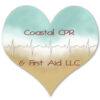This post is written specifically for other Instructors about the requirements and details for remote instruction. If you’re looking to take a class remotely please check out my Remote Skills – what students should know post.
I began providing remote skills sessions this past Spring. It took a lot of time figuring out how to do it correctly, meet guidelines, meet AHA requirements, and make sure everyone was learning and practicing correctly. I did a quick post in April about remote skills verification. I also volunteered this summer in a pilot program with Laerdal on their Anniewhere app to assist with remote instruction and meeting the AHA adult CPR feedback requirement.
First off…. here are the official documents from the AHA, ARC, and ASHI on what they require of instructors providing remote instruction.
AHA – available from your TCC
AHA Interim Guidance Virtual Training Options December 2020
AHA Interim Guidance Virtual Training Options June 2020
AHA Heartsaver virtual lesson maps are also available
ARC – available in Learning Center
ARC BLS Interim Virtual Skills Training Guidance
ARC First Aid CPR AED Interim Virtual Skills Check Guidance Sheet
ARC Virtual Skills Training presentations are also available
ASHI – available in OTIS, in the TCAM
HSI TCAM pages 60-62 (edited to save you scrolling through the entire document)
Each organization has released it’s own guidance for instructors, and that guidance is pretty similar:
Hands-on skills practice and testing are required. The use of ‘reverse demonstrations’ or verbalizing skills is not allowed. The only exception to this would be if a student was taking Heartcode BLS to earn the Advisor BLS eCard.
Use of CPR equipment. The instructor must be able to view manikin compression depth and recoil. Both ARC and ASHI specifically state in their guidance that manikins must be used. The AHA does not specifically state that manikins must be used, but their guidance requires the use of feedback devices and observation of compressions depth, recoil, and rate. I’ve tried, and made videos, of 2 homemade options to replace manikins. You can check out chest compressions on rolls of toilet paper and chest compressions on rolled towels with a water bottle. Neither were successful to meet this requirement. There are many brands of manikins on the market and as long as an instructor can meet these requirements you can use whatever equipment you want.
AHA Adult CPR Feedback requirement is still in place. There are several ways to meet this requirement. You need to hear the manikin click. If you have Prestan manikins have them set up their device they are using for video to show the lights on the manikin. You can use the WNL Products Practi-CRdM feedback bracelet. You can use Anniewhere. Anniewhere works with both Laerdal QCPR manikins and any manikin. It is a free app the students download on their smartphone and they can either sync their manikin to the app or set up the phone to watch their body motions to give compressions feedback. With non-sensitized (not bluetooth or QCPR) manikins the app will give you feedback on rate while the audible click of the manikin will provide feedback on depth.
Another question I’ve seen in our online groups – are instructors allowed or authorized to provide remote instruction?
The answer is Yes and No. I answer a lot of questions like that.
The AHA requires that Training Centers notify them if they or any of their instructors are providing remote instruction. It’s a simple and quick email to the TC account rep. So if you are an AHA Instructor you must have permission from your Training Center to provider remote instruction.
As of this posting, I have not checked if ARC or ASHI Instructors need any permissions to provide remote instruction. I will update this when I find out.
So, those are the interim guidelines as I am interpreting them. If you’re wondering how I do it, here’s what I do.
At the moment I am only providing remote skills sessions, that might change in the future, but for now all my students use blended learning. I mail out a kit using Laerdal Mini Anne and Mini Baby. Mini Anne comes in an inflation bag and I provide a hand pump to inflate Mini Baby. I also provide a pocket mask, one-way valve, and AED simulator. For BLS students they receive 2 BVM’s and First Aid students receive gloves, gauze, and an Epi-Pen trainer. If a student is local I might drop off my Laerdal Little Family set of manikins with additional supplies. I have my students download QCPR Classroom and I use the Anniewhere app to provide assistive feedback and to monitor their chest compressions.
If you have any questions on remote and virtual instruction please comment or email me.
